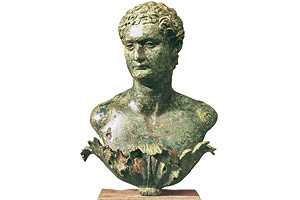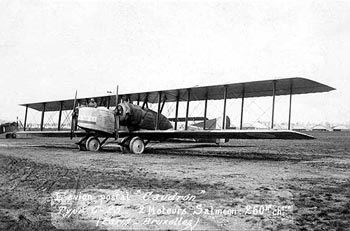Octavian concentrated power in himself, adding the titles of princeps senatus (28 B.C.) and princeps to the titles of emperor and consul (43 B.C.). He stood down from all judicial roles and had the Senate name him Augustus (27 B.C.), which gave him the status of a semi-god and allowed him, with the bestowal by the Senate of an eternal imperium (superior to that of all of the magistrates), to close the circle of total power in 23 B.C. With the Senate in his hands, the magistrates under his tutelage and the backing of the army, Augustus governed practically as an absolute monarch.
This emperor imposed Pax Romana on the empire, and also restored morals and good conduct to Rome, re-establishing traditional religion. Augustus carried out a sweeping administrative reform that divided the Roman provinces into senatorial districts (administrated by the Senate) and imperial districts (which paid tax to the emperor). He also carried out important public and engineering works.
Due to Augustus’ military genius the empire was able to span north to south, from the British Channel to the Sahara Desert, and west to east, from the Atlantic to Mesopotamia. Among his greatest achievements are the conquest of Asian territories, among those Judea; the Galatian Kingdom in the centre of Turkey, and the area of Hispania on the Iberian Peninsula. He also annexed Retia, Norica and Pannonia (now Switzerland, Austria and Hungary).
Augustus’ government, named by historians the «Golden Age«, began the first dynasty of Emperors, the Julio-Claudian Dynasty (27 B.C-68 A.D).
The Government of the Great Dynasties.
Augustus’ death brought on the pending problem of his succession, as there was neither an elective nor a dynastic order to decide this. Tiberius was finally raised to the imperial throne. He is recognised as having military skills and a fitting sense of organisation, but also as having some defects such as his cruelty and dissolute sex life. During his reign, Christ was crucified.
After his death in the year 37 the empire would fall into the hands of two sadly recalled emperors, firstly Caligula (37-41 A.D.) and then Nero (54-68 A.D.)
It is appropriate to mention that Caligula was assassinated at the hands of the praetorians, who gave power to his uncle Claudius (41-54 A.D.) who annexed the provinces of Mesia, Tracia, and Britannia. Claudius was assassinated by his wife Agrippina, and succeeded by her son, Nero.
After Nero, the Roman military commanders appropriated the ability to name the sovereign. Therefore, after a year of conflict, known as «the Year of the Four Emperors» (because four senators: Galba, Otho, Vitellius and Vespasian fought over the role) Vespasian managed to stabilise the empire and put in place a new hereditary line, the Flavian Dynasty.
Peace was obtained under the government of Vespasian (69-79 A.D) until the Romans had to take care of different conflicts in Pontus, Danubius and Britannia. These were crushed, but at a high human and economic price. Under his mandate a programme of public works took place in Rome, which included the beginning of of the Coliseum’s construction and the Forum. Furthermore, his son Titus seized and destroyed Jerusalem in 70 A.D.
Titus succeeded his father (79-81 A.D.). He was regarded as an excellent emperor and a prodigious builder who beautified Rome. Titus was succeeded by Domitian (81-96 A.D.)





